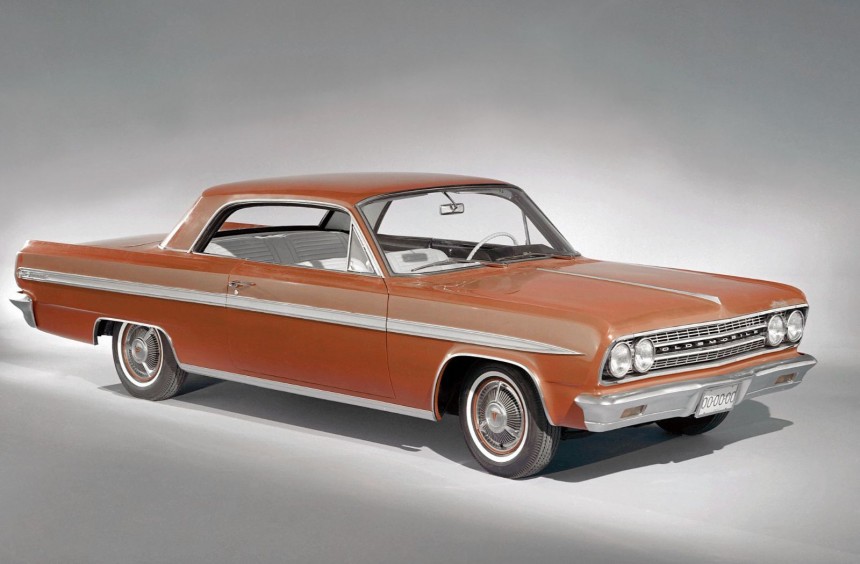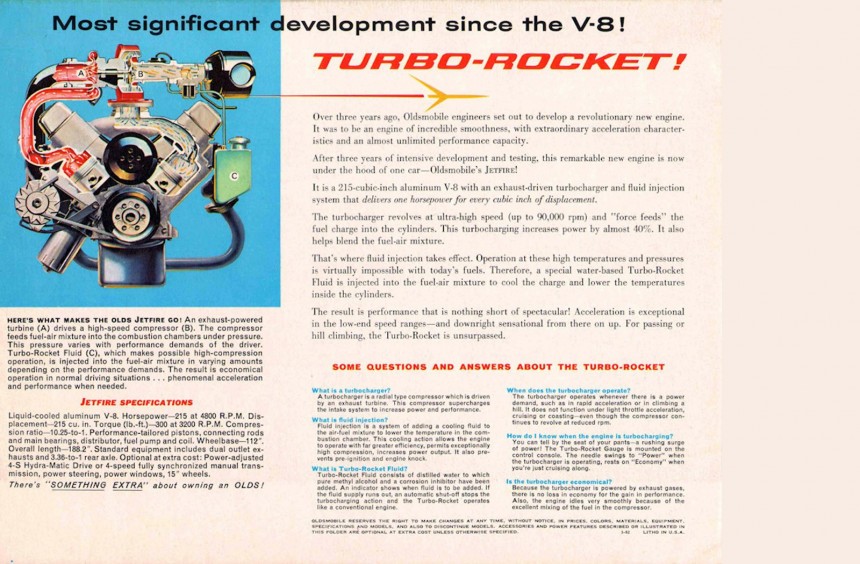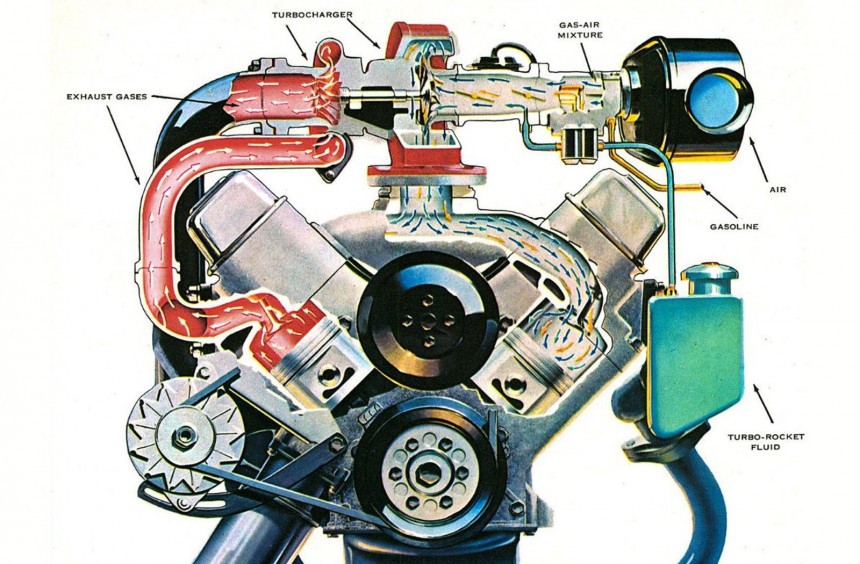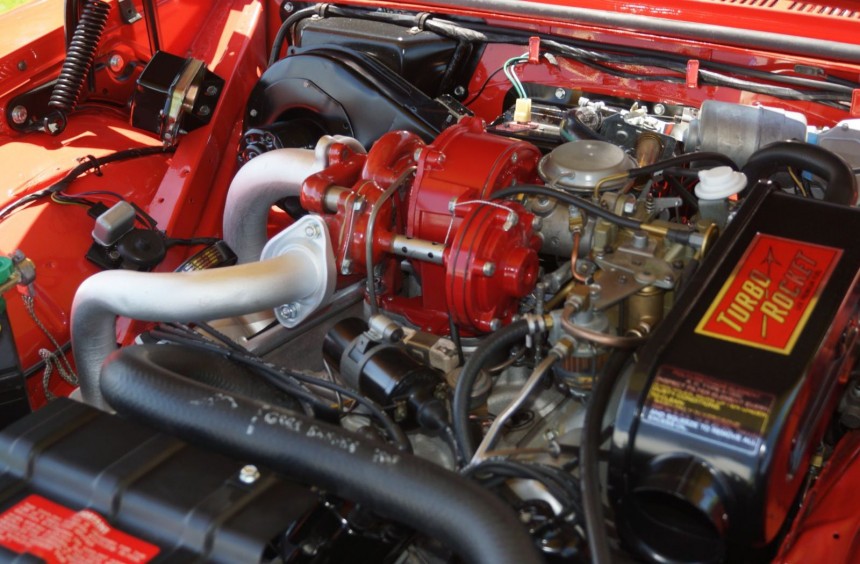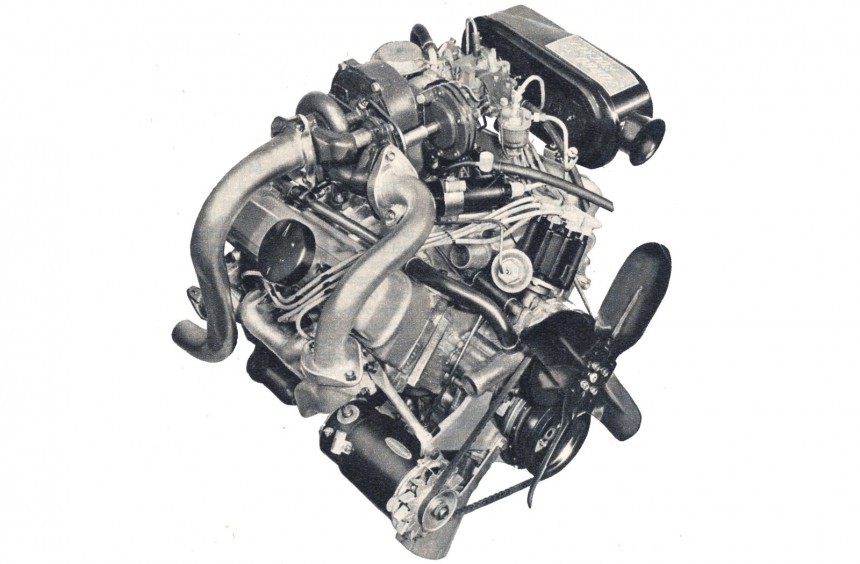A small (by 1962 standards), all-aluminum V8 produced by Oldsmobile, the innovative Turbo-Rocket introduced turbocharging to the masses.
These days, most of the internal combustion engines that are still mass-produced employ turbochargers.
This version of forced induction technology allows for smaller packaging, improved fuel economy, and lower emissions, all without compromising power.
Turbocharging first emerged in the aircraft industry. Swiss engineer Alfred Büchi patented the design. Ten years later, he built the first functional prototype, but reliability issues prevented the tech from going into production.
The same Büchi-designed turbo eventually made it into production in 1925, seeing use in large passenger ships' diesels, and during the Second World War, the technology was widely used for aircraft engines.
In the automotive industry, many manufacturers started experimenting with turbos after WWII ended, but a decade had to pass until they made it into mass-produced engines.
Though several turbocharged automobile engine prototypes were built during the first part of the fifties, issues related to lag and reliability didn't make them feasible for production in the eyes of most manufacturers that experimented with them.
However, one notable exception was General Motors, which allowed its Chevrolet and Oldsmobile divisions to push past the prototype stage with their respective turbocharged engines.
Introduced during the 1962 model year, the Chevy turbo engine was based on its air-cooled flat-six, debuting inside the engine bay of the Corvair Spyder Turbo, while Olds' version was a more spectacular and powerful V8 found under the hood of the Cutlass-derived Jetfire.
While Olds engineers were busy with their turbo prototype, their counterparts from Buick had just unleashed a new, all-aluminum V8 in 1961.
An innovative lightweight unit, the engine didn't fare too well on the American market, but once Rover purchased the rights to its design, it became one of the most legendary V8s ever produced.
Buick's all-aluminum 215-ci (3.5-liter) was also borrowed by siblings Oldsmobile. Called Rockette in naturally-aspirated form, the motor was used in mass-produced Olds models but also became the innovative Turbo-Rocket, the world's first turbocharged V8 fitted inside the engine bay of a passenger car.
As was the case with the very first turbocharged engines, Oldsmobile's goal was to produce a motor that improved fuel economy without compromising performance.
Starting with the weight advantage provided by the all-aluminum construction, the 215 V8 became twice as innovative with the addition of an exhaust gas-powered Garrett AiResearch turbocharger limited to 5 psi (0.34 bar) of boost, a special Rochester single-barrel side-draft carb and several other modifications that made it way ahead of its time.
One of these innovative modifications was a pressure-sensitive exhaust bypass valve or, in modern terms, a wastegate. Developed to control pressure, the valve opened via a sensor input if the 5-psi threshold was exceeded. Once open, the gasses were rerouted through a secondary exhaust outlet that bypassed the turbo.
With the pioneering turbo and a high 10.25:1 compression ratio, the novel V8 could make 215 hp at 4,600 rpm and 300 lb-ft (407 Nm) at 3,200 rpm. Apart from gobbling up less duel, the new Olds motor was more potent than the four-barrel-equipped, naturally aspirated 215 of 1962, which made 190 hp and 235 lb-ft (319 Nm).
Apart from turbo lag, which wasn't that big of an issue on American highways, one of the reasons why other prototype turbo engines didn't make it into production cars during that era was their susceptibility to detonation (aka spark-knock), which led to serious engine damage.
Today, we have smart electronic management systems to prevent detonation, but back when the Turbo-Rocket was developed, such tech was decades (or at least a decade) away.
To minimize the risk of detonation, Olds engineers designed an ingenious preignition system Inspired by a similar technique used by WWII aircraft engines.
The system used a so-called Turbo-Rocket fluid (a mixture of methanol and water) to keep combustion at bay and incorporated mechanical valves, ducts, and diaphragms.
When the fluid ran out, a console-mounted light warned the driver that it was time to refill the tank, while the series of valves, ducts and diaphragms restricted the turbo's boost pressure to 1 psi (0,006 bar).
Despite being an innovative engine with a clever design that made the same power as a naturally-aspirated V8 twice its size, the Turbo-Rocket suffered from several reliability issues.
One of the premier issues was engine knocking, which wasn't eliminated by the additional methanol/water injection system, while the second was caused by the owners who used the incorrect coolant and damaged the all-aluminum engine - a problem that plagued all versions of the innovative, Buick-designed V8.
Its issues and the market's growing appetite for larger, more powerful naturally-aspirated V8s persuaded Olds to drop the pioneering engine after the 1963 model year.
When it was introduced, it became the first mass-produced turbocharged V8 ever fitted into the engine bay of an automobile and, along with the Chevy unit, the first production turbo engine in the automotive industry.
It would take a little over a decade for this technology to become more widespread in the world of passenger cars, and, to a large extent, all modern turbocharged engines owe their existence to the innovative Olds V8.
During the 1962 and 1963 model years, Oldsmobile only sold 9,617 Turbo-Rocket-equipped Jetfires. Today, it's estimated that less than 200 examples of the engine have survived.
Though not a marketing hit, the Turbo-Rocket V8 introduced turbocharging to the automotive world and reserves its place among the industry's most iconic engines.
In the following video posted on YouTube by US Auto Industry, you can watch an original presentation of this pioneering engine and the car that used it.
This version of forced induction technology allows for smaller packaging, improved fuel economy, and lower emissions, all without compromising power.
Turbocharging first emerged in the aircraft industry. Swiss engineer Alfred Büchi patented the design. Ten years later, he built the first functional prototype, but reliability issues prevented the tech from going into production.
The same Büchi-designed turbo eventually made it into production in 1925, seeing use in large passenger ships' diesels, and during the Second World War, the technology was widely used for aircraft engines.
In the automotive industry, many manufacturers started experimenting with turbos after WWII ended, but a decade had to pass until they made it into mass-produced engines.
GM's ambitious bet on turbocharging
However, one notable exception was General Motors, which allowed its Chevrolet and Oldsmobile divisions to push past the prototype stage with their respective turbocharged engines.
Introduced during the 1962 model year, the Chevy turbo engine was based on its air-cooled flat-six, debuting inside the engine bay of the Corvair Spyder Turbo, while Olds' version was a more spectacular and powerful V8 found under the hood of the Cutlass-derived Jetfire.
Innovation increased twofold
An innovative lightweight unit, the engine didn't fare too well on the American market, but once Rover purchased the rights to its design, it became one of the most legendary V8s ever produced.
Buick's all-aluminum 215-ci (3.5-liter) was also borrowed by siblings Oldsmobile. Called Rockette in naturally-aspirated form, the motor was used in mass-produced Olds models but also became the innovative Turbo-Rocket, the world's first turbocharged V8 fitted inside the engine bay of a passenger car.
Way ahead of its time
Starting with the weight advantage provided by the all-aluminum construction, the 215 V8 became twice as innovative with the addition of an exhaust gas-powered Garrett AiResearch turbocharger limited to 5 psi (0.34 bar) of boost, a special Rochester single-barrel side-draft carb and several other modifications that made it way ahead of its time.
One of these innovative modifications was a pressure-sensitive exhaust bypass valve or, in modern terms, a wastegate. Developed to control pressure, the valve opened via a sensor input if the 5-psi threshold was exceeded. Once open, the gasses were rerouted through a secondary exhaust outlet that bypassed the turbo.
With the pioneering turbo and a high 10.25:1 compression ratio, the novel V8 could make 215 hp at 4,600 rpm and 300 lb-ft (407 Nm) at 3,200 rpm. Apart from gobbling up less duel, the new Olds motor was more potent than the four-barrel-equipped, naturally aspirated 215 of 1962, which made 190 hp and 235 lb-ft (319 Nm).
WWII aircraft-derived preignition system
Today, we have smart electronic management systems to prevent detonation, but back when the Turbo-Rocket was developed, such tech was decades (or at least a decade) away.
To minimize the risk of detonation, Olds engineers designed an ingenious preignition system Inspired by a similar technique used by WWII aircraft engines.
The system used a so-called Turbo-Rocket fluid (a mixture of methanol and water) to keep combustion at bay and incorporated mechanical valves, ducts, and diaphragms.
When the fluid ran out, a console-mounted light warned the driver that it was time to refill the tank, while the series of valves, ducts and diaphragms restricted the turbo's boost pressure to 1 psi (0,006 bar).
Far from perfect and discontinued after only two years
One of the premier issues was engine knocking, which wasn't eliminated by the additional methanol/water injection system, while the second was caused by the owners who used the incorrect coolant and damaged the all-aluminum engine - a problem that plagued all versions of the innovative, Buick-designed V8.
Its issues and the market's growing appetite for larger, more powerful naturally-aspirated V8s persuaded Olds to drop the pioneering engine after the 1963 model year.
Despite its flaws, the Turbo-Rocket became an engineering legend
It would take a little over a decade for this technology to become more widespread in the world of passenger cars, and, to a large extent, all modern turbocharged engines owe their existence to the innovative Olds V8.
During the 1962 and 1963 model years, Oldsmobile only sold 9,617 Turbo-Rocket-equipped Jetfires. Today, it's estimated that less than 200 examples of the engine have survived.
Though not a marketing hit, the Turbo-Rocket V8 introduced turbocharging to the automotive world and reserves its place among the industry's most iconic engines.
In the following video posted on YouTube by US Auto Industry, you can watch an original presentation of this pioneering engine and the car that used it.










